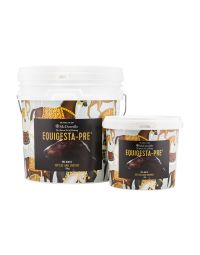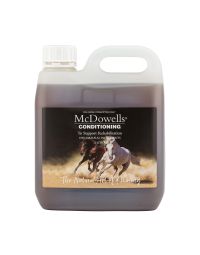What Are Mycotoxins?
Mycotoxins are toxic compounds produced by certain moulds (fungi) that grow on crops, grasses, grains, and stored feeds - especially under moist, warm, or humid conditions. Common mycotoxin-producing fungi include Aspergillus, Fusarium, and Penicillium.
These moulds may be invisible to the eye but still contaminate hay, feed, or pasture - particularly during wet, muddy winters or in poorly ventilated feed storage areas.
How do mycotoxins affect horses?
- While some horses seem resilient, others are more sensitive and can develop a wide range of issues due to mycotoxin exposure, including:
- Digestive upsets (diarrhoea, colic, weight loss)
- Skin conditions (lumps, itchiness, hair loss)
- Liver and kidney stress
- Immune suppression
- Behavioural changes, anxiety or lethargy
- Poor hoof condition or laminitis
- Hormonal disruption, especially in mares
Even low-level, chronic exposure can burden the gut-liver-immune axis, reducing the body’s ability to detoxify and recover from stress, infection, or injury.
Why are horses so susceptible?
Horses are hindgut fermenters with delicate gut microbiomes. Mycotoxins disrupt microbial balance and can damage the gut lining, increasing permeability (leaky gut). This contributes to systemic inflammation, toxin overload, and long-term metabolic challenges.
Complicating things further, horses are often fed concentrates or hay from bulk storage, where mould may thrive. Prolonged exposure, especially in winter when fresh pasture is limited, increases the risk.
Can Mycotoxins Be Measured or Diagnosed?
Diagnosing mycotoxin toxicity can be challenging. Symptoms are often vague and mimic other conditions. Testing feed for contamination is possible, but not always accessible or affordable.
Instead, we look at the whole picture:
- Has there been a change in condition or behaviour?
- Has there been damp weather or spoiled hay?
- Are there recurring infections, gut issues, or skin flares?
If so, a mycotoxin burden may be part of the puzzle.
Can mycotoxins cause long-term health issues?
Unfortunately, yes. Long-term exposure - even at low levels - can contribute to chronic problems including laminitis, metabolic dysfunction, liver stress, and reproductive issues. That’s why it’s so important to take early symptoms seriously and support your horse’s recovery with a natural, comprehensive approach.
Natural support: And a holistic approach
We recommend a three-part approach to address potential mycotoxin-related issues:
1. Bind and Eliminate
Natural binders like zeolite, bentonite clay, and activated charcoal help absorb toxins in the gut before they are absorbed. These should be given short-term under guidance.
2. Heal and Restore the Gut
Support the mucosal lining with slippery elm, chamomile, and marshmallow root. These herbs soothe inflammation, support microbiome balance, and protect against ulceration.
Include prebiotics and probiotics where possible to restore healthy gut flora.
3. Support Detox Organs
The liver and kidneys work hard to remove toxins. Herbs like:
St. Mary’s thistle (milk thistle) for liver regeneration
Dandelion root and leaf for bile production and kidney support
Rosehips for vitamin C and antioxidant protection
Additional suggestions
- Feed clean, dust-free hay and avoid mouldy or damp feeds
- Elevate feed bins and ensure water sources are clean
- Rotate paddocks and allow wet areas to dry when possible
- Consider adding a conditioning tonic during winter or post-illness recovery
If your horse is showing signs of unexplained health issues, we’re here to support you. Every horse is unique, and our team offers free consultations to help you create a personalised plan.
References


